Perpendicular Lines
In geometry, two lines are said to be perpendicular if they intersect at a right angle (90 degrees). This means that the lines form four right angles where they meet. The symbol for perpendicular lines is ⊥.
How to Identify Perpendicular Lines
To identify perpendicular lines, you can use a protractor to measure the angle formed by the two lines where they intersect. If the angle measures 90 degrees, then the lines are perpendicular.
Examples of Perpendicular Lines
Some common examples of perpendicular lines are the sides of a square or rectangle, the legs of a right triangle, and the axes of a coordinate plane.
Properties of Perpendicular Lines
Perpendicular lines have a few important properties:
- They intersect at a right angle (90 degrees).
- The slopes of perpendicular lines are negative reciprocals of each other. If the slope of one line is m, then the slope of the perpendicular line is -1/m.
- They form right angles where they intersect.
◂Math Worksheets and Study Guides Second Grade. Fractions Greater Than or Less Than 1/2
Study Guide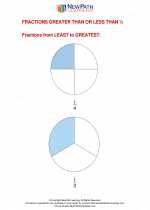 Fractions Greater Than or Less Than 1/2
Fractions Greater Than or Less Than 1/2  Worksheet/Answer key
Worksheet/Answer key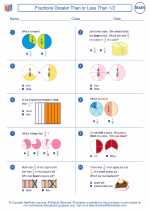 Fractions Greater Than or Less Than 1/2
Fractions Greater Than or Less Than 1/2  Worksheet/Answer key
Worksheet/Answer key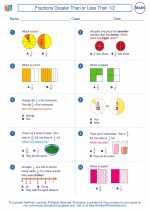 Fractions Greater Than or Less Than 1/2
Fractions Greater Than or Less Than 1/2  Worksheet/Answer key
Worksheet/Answer key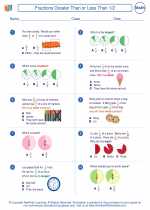 Fractions Greater Than or Less Than 1/2
Fractions Greater Than or Less Than 1/2  Worksheet/Answer key
Worksheet/Answer key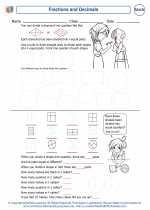 Fractions and Decimals
Fractions and Decimals  Worksheet/Answer key
Worksheet/Answer key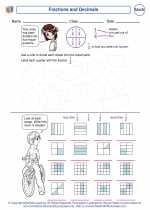 Fractions and Decimals
Fractions and Decimals  Vocabulary/Answer key
Vocabulary/Answer key Fractions Greater Than or Less Than 1/2
Fractions Greater Than or Less Than 1/2 

 Worksheet/Answer key
Worksheet/Answer key
 Worksheet/Answer key
Worksheet/Answer key
 Worksheet/Answer key
Worksheet/Answer key
 Worksheet/Answer key
Worksheet/Answer key
 Worksheet/Answer key
Worksheet/Answer key
 Vocabulary/Answer key
Vocabulary/Answer key

Create And Print more Fractions worksheets with Comparing Fractions, Equivalent Fractions, and Simplifying Fractions
The resources above cover the following skills:
Number and Operations (NCTM)
Understand numbers, ways of representing numbers, relationships among numbers, and number systems.
Understand and represent commonly used fractions, such as 1/4, 1/3, and 1/2.